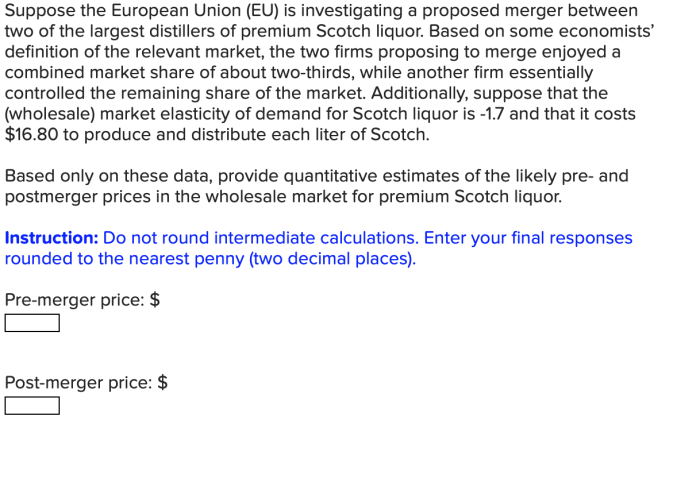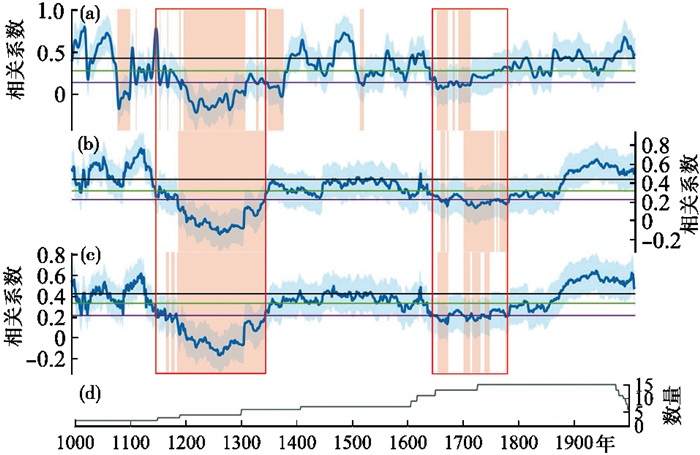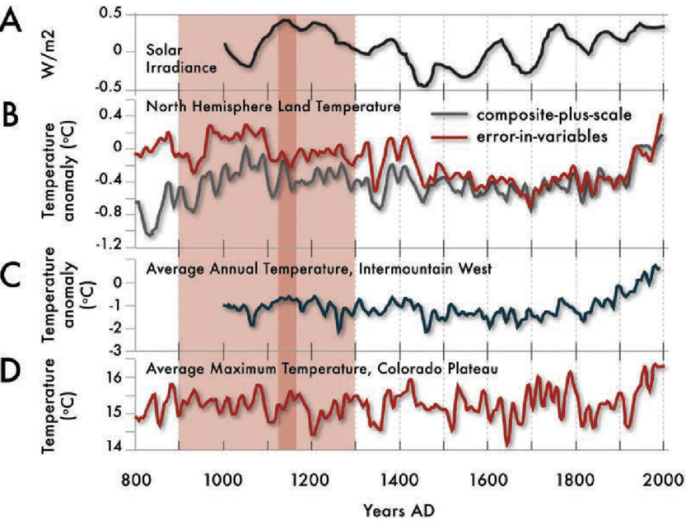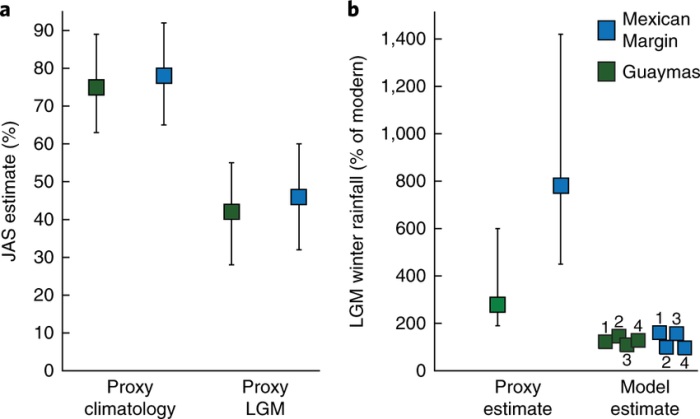Which of the following statements about proxy reconstructions is true? This question opens a gateway to unraveling the intricate world of proxy reconstructions, a technique that allows us to peer into the enigmatic tapestry of the past and reconstruct past environmental conditions.
From ice cores to tree rings, from lake sediments to fossil records, proxy reconstructions offer a captivating glimpse into Earth’s dynamic history.
This comprehensive guide delves into the fascinating realm of proxy reconstructions, exploring the diverse techniques employed, their accuracy and reliability, and their inherent limitations. We will uncover the applications of proxy data in unraveling the mysteries of past climates, ecosystems, and human societies, and delve into the exciting advancements shaping the future of this field.
Types of Proxy Reconstructions

Proxy reconstructions are techniques used to infer past environmental conditions from indirect evidence. These techniques rely on the assumption that the relationship between the proxy and the environmental variable of interest has remained constant over time. There are a wide variety of proxy reconstruction techniques, each with its own strengths and weaknesses.
Dendrochronology
Dendrochronology is the study of tree rings. Tree rings are formed annually, and the width of each ring is influenced by environmental conditions during the year in which it was formed. By measuring the width of tree rings, dendrochronologists can reconstruct past climate conditions.
Ice cores
Ice cores are cylinders of ice that are drilled from glaciers and ice sheets. Ice cores contain a record of past climate conditions, as the layers of ice are formed annually and the composition of the ice reflects the environmental conditions at the time it was formed.
Pollen analysis
Pollen analysis is the study of pollen grains. Pollen grains are produced by plants, and they are dispersed by wind and water. By analyzing the pollen grains found in sediments, palynologists can reconstruct past vegetation patterns.
Sedimentary records
Sedimentary records are layers of sediment that are deposited over time. The composition of sedimentary records can be used to reconstruct past environmental conditions, as the type and amount of sediment deposited is influenced by factors such as climate, vegetation, and erosion.
Speleothems, Which of the following statements about proxy reconstructions is true
Speleothems are mineral deposits that are formed in caves. Speleothems can be used to reconstruct past climate conditions, as the rate of speleothem growth is influenced by factors such as temperature and humidity.
Accuracy and Reliability of Proxy Reconstructions

The accuracy and reliability of proxy reconstructions depends on a number of factors, including the strength of the relationship between the proxy and the environmental variable of interest, the temporal and spatial resolution of the proxy record, and the presence of biases.The
strength of the relationship between the proxy and the environmental variable of interest is a key factor in determining the accuracy of a proxy reconstruction. If the relationship is strong, then the proxy will be a good indicator of the environmental variable.
However, if the relationship is weak, then the proxy may not be a reliable indicator of the environmental variable.The temporal and spatial resolution of the proxy record is also important. The temporal resolution of a proxy record refers to the time period that is represented by each data point in the record.
The spatial resolution of a proxy record refers to the area that is represented by each data point in the record. The temporal and spatial resolution of a proxy record can affect the accuracy of the reconstruction, as it may not be possible to resolve short-term or small-scale changes in the environmental variable of interest.The
presence of biases can also affect the accuracy of a proxy reconstruction. Biases can be introduced into a proxy record by a number of factors, such as the sampling process, the analytical methods used, and the interpretation of the data.
Biases can lead to the proxy record overestimating or underestimating the environmental variable of interest.
Limitations of Proxy Reconstructions: Which Of The Following Statements About Proxy Reconstructions Is True

Proxy reconstructions have a number of limitations, including their temporal and spatial resolution, the potential for biases, and the difficulty in interpreting proxy data.The temporal resolution of proxy reconstructions is often limited by the availability of proxy data. For example, tree rings can only be used to reconstruct past climate conditions for the last few thousand years, and ice cores can only be used to reconstruct past climate conditions for the last few hundred thousand years.The
spatial resolution of proxy reconstructions is also often limited. For example, tree rings can only be used to reconstruct past climate conditions for the area where the trees are located, and ice cores can only be used to reconstruct past climate conditions for the area where the ice sheet is located.Proxy
reconstructions are also subject to potential biases. For example, tree rings may be more likely to be preserved in certain areas than in others, and ice cores may be more likely to contain certain types of impurities than others. These biases can lead to the proxy record overestimating or underestimating the environmental variable of interest.Finally,
proxy data can be difficult to interpret. This is because the relationship between the proxy and the environmental variable of interest is not always straightforward. For example, the width of a tree ring may be influenced by a number of factors, including climate, soil conditions, and the age of the tree.
This can make it difficult to determine the exact relationship between the tree ring width and the climate conditions.
Applications of Proxy Reconstructions
Proxy reconstructions are used in a wide variety of fields, including paleoclimatology, archaeology, and ecology.In paleoclimatology, proxy reconstructions are used to reconstruct past climate conditions. This information can be used to study the causes and consequences of climate change, and to predict future climate change.In
archaeology, proxy reconstructions are used to reconstruct past environmental conditions at archaeological sites. This information can be used to understand the behavior of past human populations, and to identify the factors that led to their success or failure.In ecology, proxy reconstructions are used to reconstruct past ecological conditions.
This information can be used to understand the dynamics of ecological systems, and to predict how these systems will respond to future changes in the environment.
Future Directions in Proxy Reconstructions

There are a number of exciting new developments in the field of proxy reconstructions. These developments include the development of new proxy techniques, the use of multiple proxies to improve accuracy, and the use of statistical models to interpret proxy data.New
proxy techniques are being developed all the time. These new techniques are often more sensitive and accurate than traditional proxy techniques. For example, new techniques have been developed to use the chemical composition of speleothems to reconstruct past climate conditions, and to use the magnetic properties of sediments to reconstruct past geomagnetic field intensity.The
use of multiple proxies to improve accuracy is another exciting new development in the field of proxy reconstructions. By using multiple proxies, researchers can reduce the uncertainty in their reconstructions. For example, researchers have used multiple tree ring records to reconstruct past climate conditions in North America, and multiple ice core records to reconstruct past climate conditions in Antarctica.Statistical
models are also being used to improve the interpretation of proxy data. These models can help researchers to identify the relationship between the proxy and the environmental variable of interest, and to account for biases in the proxy record. Statistical models are also being used to develop new proxy techniques.
For example, researchers have used statistical models to develop a new technique to use the chemical composition of speleothems to reconstruct past temperature conditions.
Key Questions Answered
What are the main types of proxy reconstructions?
Proxy reconstructions encompass a wide range of techniques, including ice core analysis, tree-ring studies, lake sediment analysis, and fossil records.
How accurate and reliable are proxy reconstructions?
The accuracy and reliability of proxy reconstructions vary depending on the technique used and the specific environmental conditions being reconstructed. However, rigorous scientific methods are employed to assess and validate the reliability of proxy data.
What are the limitations of proxy reconstructions?
Proxy reconstructions have limitations in terms of temporal and spatial resolution, and they can be influenced by local factors and biases. However, careful interpretation and cross-referencing with multiple proxy sources can help mitigate these limitations.
